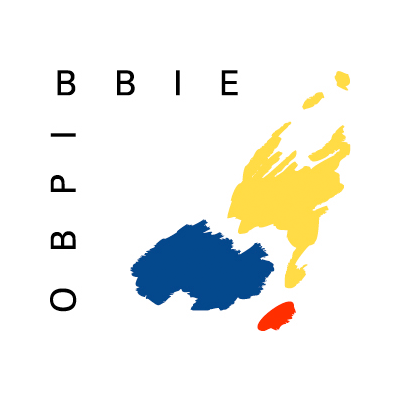Protection in the Benelux

What is a trademark?
A trademark is a distinguishing feature. The most famous types are word and picture trademarks. 99% of the trademarks falls within these categories. Other categories are form, colour and sound trademarks.
- Word trademark: the name under which a product or service is on the market;
- Picture trademark: a logo or ETIKET, but also a word in a special font or lay-out (a logo which represents a name);
- Form trademark: in special cases the form of a product or an VERPAKKING (think e.g. about perfume bottles) can be also trademarked;
- Colour trademark: in exceptional cases the sole colour or a combination of colours can be trademark as well. This can apply when the public recognises a certain product or service because of that colour. An example are the blue gas tanks, often used at campings;
- Sound trademark: some commercial jingles are so well-known with the public that hearing them alone triggers a connotation with a certain trademark. In such cases a trademark for that jingle can also be registered.
Registration at the BBIP
When your trademark has not yet been registered in the Netherlands, you can do so by registering this trademark at the Benelux Bureau for Intellectual Property (BBIP). Such a registration applies directly in the Benelux as a whole, which makes separate registration in Belgium and/or Luxemburg unnecessary.
Checking the potential existence of your trademark
When you have decided upon your trademark (name) of your enterprise or your product/service, you can check easily and quick at the website of the BBIP whether this name perhaps already is in use and if yes, by who.
Registration in a specific classification
As mentioned, the registration/protection serve the purpose to prevent competitors from using the same tradename for their operations and avoid confusion in trade. For this reason an entrepreneur has to apply for registration in a certain classification, which corresponds with the sector you are active in. This also is relevant for the potential competitors you ask protection against. The BBIP distinguishes 45 different classifications.
Registration procedure
The application for registration can be executed relatively easy and quick. In general it does not take too much time.
The procedure at the BBIP takes around (minimal) three months. In this period the BBIP checks whether the tradename is eligible for registration and potential stakeholders are invited to object against your registration (when your name e.g. is almost exactly the same as another).
When third parties do not file complaints against the registration, the BBIP decides after around three months whether the trademark can be registered or not. When a third party however does lodge a complaint it depends on the outcome of the dispute and the time it will take when the registration will be completed.
Obligatory grounds of refusal as used by the BBIP
In certain cases the BBIP is obligated to refuse registration, without interference of a third party. Several of these grounds:
- The trademark is too descriptive. This could apply to those names, amongst others, which describes (features) of the product/service for which the application is lodged.
- The trademark lacks distinctive power;
- The trademark exclusively consists of signs, numbers or denominations which in trade could serve as an indication of types, capacities, amounts, destinations, worth, place of origin or the moment of creation / development;
- The trademark exclusively consists of signs or denominations which in normal use of language or in malicious practice are common;
- The logo is deceptive. E.g. a logo which depicts a car cannot be used as trademark for an enterprise which deals in trams or scooters. The consumer would be misguided by such a logo.
- The logo resembles a flag, weapon or other official emblem of a State or International Organisation which is registered according to article 6ter of the Paris Treaty. Logos who resemble such an outing can only be registered with the explicit approval of the particular State or organisation. This ground of refusal generally applies for trademarks in which the flag of the European Union is being used;
- The form trademark overlaps with other intellectual property rights, such as design or patent rights. The consumer e.g. sees the form of a table or closet more a model instead of a certain trademark. In the law this has been described as follows: A form cannot be a trademark when: (1) this form has been determined by the nature of the product, (2) this form gives significant value to the product, (3) it is necessary to receive a technical outcome. In many cases a trademark can also lack distinguishing features;
- The trademark is in breach with public order and peace, which does not often occur in the Benelux.
When a case occurs that the BBIP intends to refuse the application for registration as a whole or partially, this must be stated directly in writing to the entrepreneur in addition to the reasons of refusal.
Conservation and expiration
After a trademark/logo has been registered, it is important to actually use it. When a trademark has not been used within five years after registration, it can be pronounced as declined.
With such a pronunciation the right to claim against competitors, because of their use of the tradename, expires. This also applies when the entrepreneur did not address this issue for a long period of time when he had knowledge of the double use.
Temporary validity period
Lastly it is important to know that a registration at the BBIP is only valid for 10 years. After that period the registration must be extended, because it otherwise expires. It is therefore handy to already put this in your to-do list / agenda.
Disbursements of the BBIP
It costs money to register at the BBIP. These costs depend on the service that has been provided, as well as with how many trademarks and the manner how this happens (digitally or through mail).
It is important to bear in mind that you always have to pay the BBIP, from the moment that you start the procedure. When the registration is refused, this is in itself no grounds for reimbursement of the costs.


